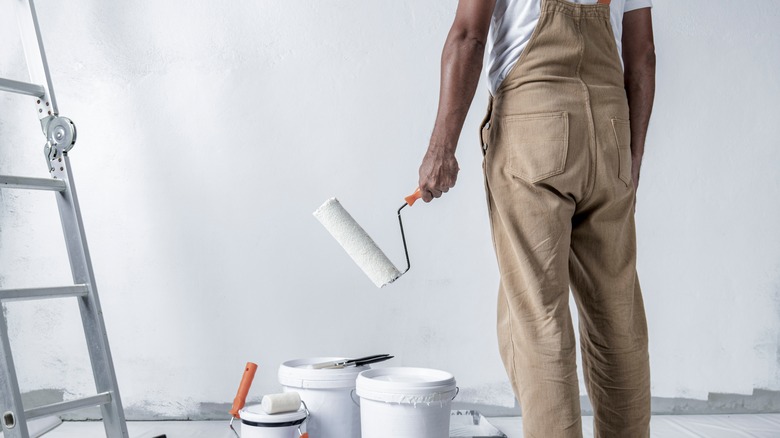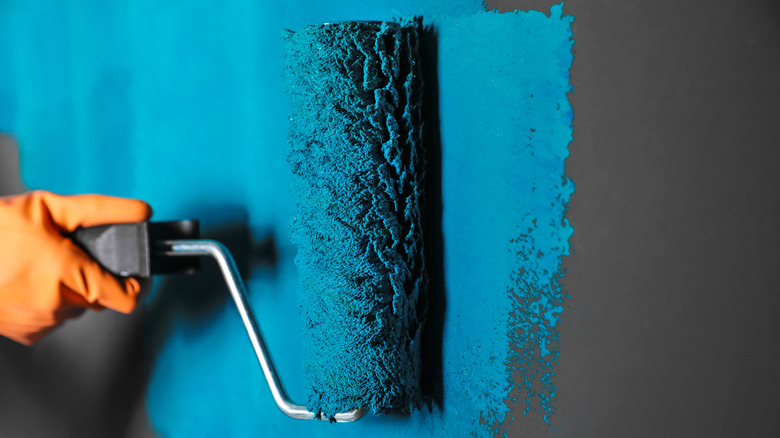When You Need A Primer For Painting Over Painted Walls
Ever been perusing the paint aisle in the hardware store and a bunch of primers caught your eye? It's tricky to know whether this product is necessary or just a waste of time, and the answer isn't exactly simple. Designed to go on the wall before you paint, primer is a must-have when painting some walls but not so necessary when covering others. It's a good option in situations like the following – if you want the wall to be in better condition or if the new paint you are using has a different base to the paint that's already on the walls.
It's also advisable to use a primer when you're painting the wall a lighter color (for example, dark purple to bright white). In these cases, this product will help to even out discrepancies and leave you with the best result. Here's everything you should keep in mind so you know exactly when using a primer on painted walls is a good idea and when it could be a waste of time and money.
Primer is key in covering up marks and stains
Firstly, if your walls aren't in perfect shape, a primer can help fix this. You should look for a product that says it will fill in small holes and imperfections or a more specialized type that's made for larger defects. Use a thick layer, as this will make your wall look as smooth as possible. Because primer usually takes a bit of time to dry, carve out some time beforehand so the wall is ready when you want to begin painting. Even if only a few sections of the wall are in bad condition, use primer on the whole surface. Otherwise, you could be left with an uneven finish.
You'll also need to use a primer when the paint that's already on the wall and the new paint type have different bases. This is particularly important with oil-based and latex-based paints. Trying to use an oil-based type over a wall with a latex-based type on it will not end well, but a primer will help the new paint to stick. Again, different products will suit different paints best, so always read the label to double check compatibility before you end up with a disaster on your hands.
Primer can cover dark paint colors
If you're covering a dark wall with a lighter color, a primer is necessary in order to give you the best shot at an even finish. How many coats of primer you'll need will depend on your wall. Though you may think one coat is enough, it's typically best to apply two coats when painting over a dark color.
By going in with a primer first, you won't need as many coats of actual paint since you have already covered some of the dark color before even starting to add the new shade. Paint tends to be more expensive than primer, so this method will save you money and possibly a few trips to the hardware store. The above instances are some of the most likely times when you should reach for primer. On the other hand, if your walls are in good condition, you're painting them a similar color, or you're using a paint with a compatible base, you can skip this step and get straight to painting.


